Local search ranking factors
Want to learn more about local search ranking?
The world of local SEO is very complex and ever-changing, and it can be challenging staying up-to-date with what affects local rankings. We understand local SEO ranking factors and have the knowledge to improve your local search.
The basic local SEO ranking signals
Google My Business
Google My Business Categories
Photos on Google My Business Page
Bing Places for Business
Online Directories/Citations
Listings on Review Sites
Number of Positive Reviews
Reviews with Keywords & Location
Reviews with Responses
Percentage of Negative Reviews not Responded to
These last few signals make it clear you need to have a plan in place for following up on all online reviews, but particularly for Google.
Facebook Business Page
Social signals may have a limited impact, but they do have an impact on social SEO.
Social Listings
People expect a fast response from businesses on social media, so be sure to leave a note or other contact info if you won’t be manning the channel.
Consistent NAPW
Make sure your name, address, phone number, and website URL are consistent across all the listings above, including review sites, maps, and social media. Ensuring that your business name, address, and phone number are exactly the same makes it easy for customers to connect with your business when it shows up online.
Mobile Responsiveness
Structured Data Markup
Click-Through Rates from Search Results
Localized Content
On-page Location + Keyword Optimization
Title + Meta Description
High-Quality Inbound Links
Domain Authority of Your Website
Inbound Links from Local Relevant Sites
Inbound Using Local + Keyword in Anchor Text
Proximity to the Searcher
Areas we serve
Situated in Clover, SC we serve local businesses in surrounding areas and the entire United States. Our services include responsive web design, search engine optimization (SEO), and content writing.
Services
Local Business First LLC, 1216 Sage Pine Circle, Clover, SC 29710
All Rights Reserved | Local Business First | Privacy Statement | Terms & Conditions | Refund Policy